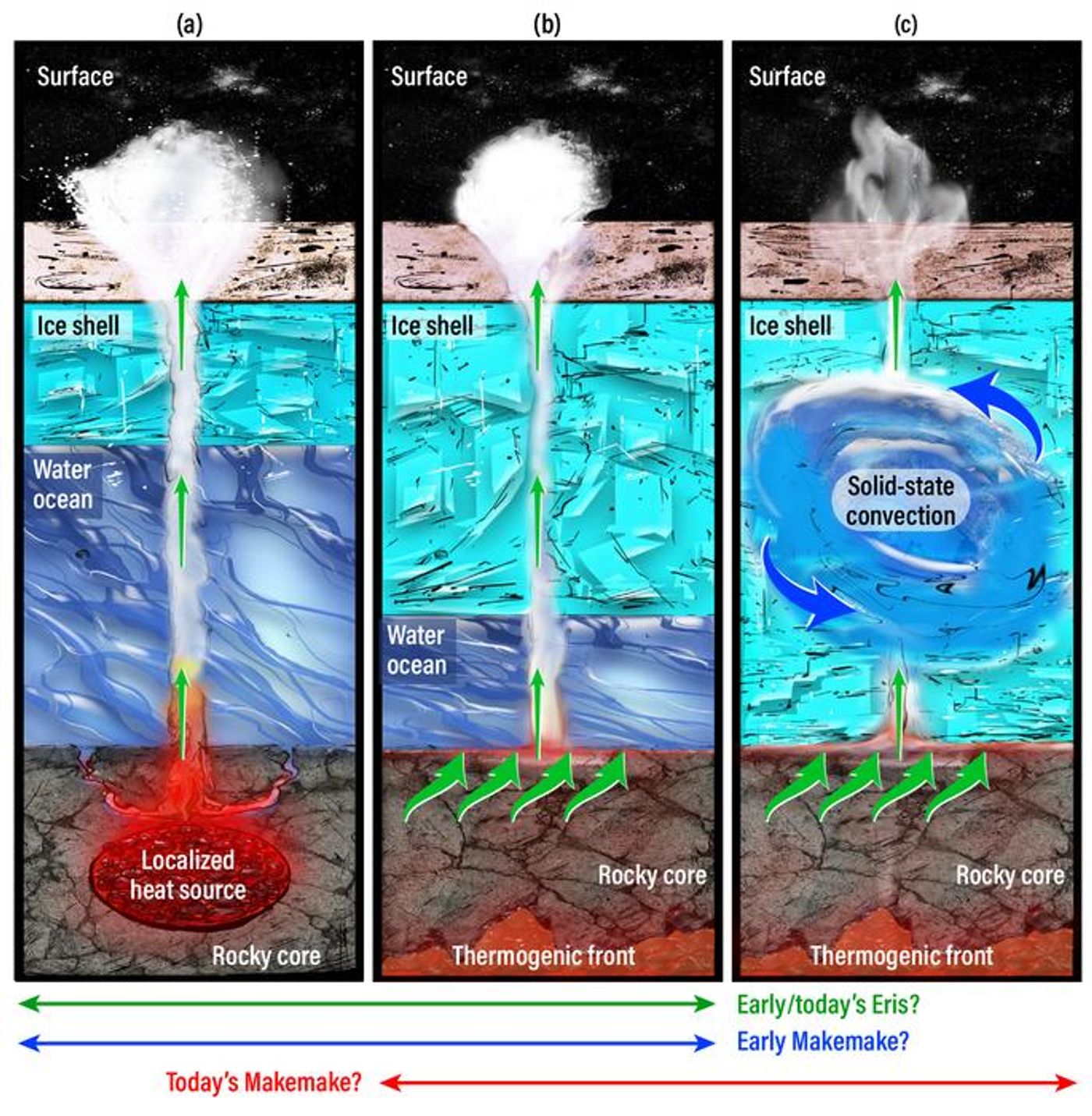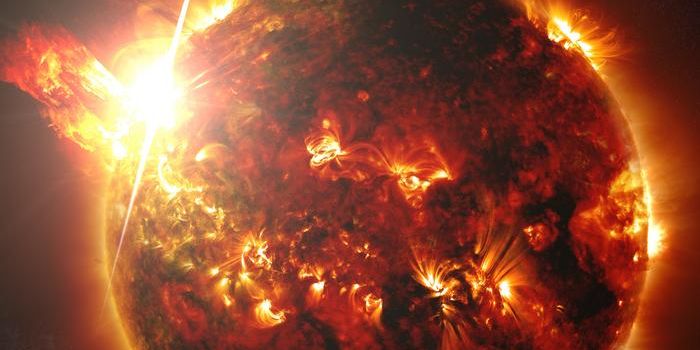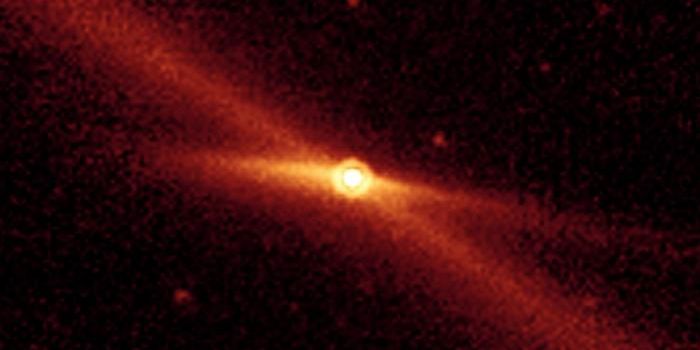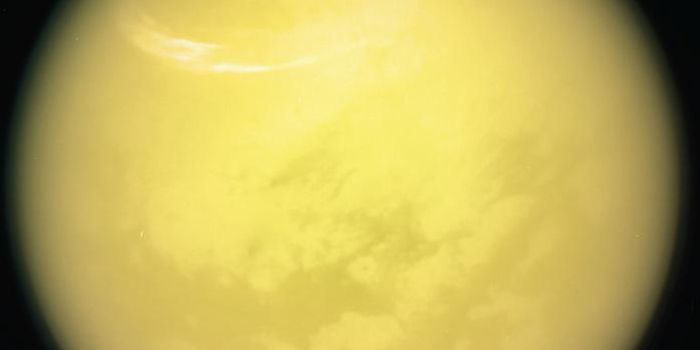Beyond the Cold: Discovering Warmth Within Eris and Makemake's Rocky Cores
Can planetary bodies that orbit in the far reaches of the solar system be geologically active? This is what a recent study published in Icarus hopes to address as a team of researchers led by the Southwest Research Institute (SwRI) investigates the potential for two dwarf planets that orbit in the Kuiper Belt, Makemake and Eris, to possess cores that are hot enough to produce hydrothermal activity, resulting in methane deposits on their respective surfaces. This study holds the potential to help scientists better understand the geological and geothermal processes that could occur on planetary bodies orbiting so far from the Sun, as the Kuiper Belt spans from between 30 astronomical units (AU) to 50 AU, or approximately the orbit of Pluto.
For the study, the researchers used NASA’s James Webb Space Telescope (JWST) to analyze the surface compositions of Makemake and Eris, specifically the ratio between heavy hydrogen (also called deuterium (D)) and hydrogen (H) in the methane that is present on the two dwarf planets’ surfaces, or the D/H ratio. The reason measuring this ratio is important is to help better understand the origin and evolution of an object, as hydrogen is the most abundant substance in the cosmos and deuterium was present in the Big Bang. In the end, the team found some interesting results regarding the origin of surface methane and whether it was formed recently or long ago.
Artist's illustration depicting three scenarios for internal activity on the dwarf planets, Makemake and Eris. (Credit: Southwest Research Institute)
“The moderate D/H ratio we observed with JWST belies the presence of primordial methane on an ancient surface. Primordial methane would have a much higher D/H ratio,” said Dr. Christopher Glein, who is a Lead Scientist at SwRI and lead author of the study. “Instead, the D/H ratio points to geochemical origins for methane produced in the deep interior. The D/H ratio is like a window. We can use it in a sense to peer into the subsurface. Our data suggest elevated temperatures in the rocky cores of these worlds so that methane can be cooked up. Molecular nitrogen (N2) could be produced as well, and we see it on Eris. Hot cores could also point to potential sources of liquid water beneath their icy surfaces.”
This study comes as scientists continue to discover an increasing number of planetary bodies within our solar system that exhibit interior activity while orbiting at incredible distances from the Sun, resulting in unique surface compositions, including Jupiter’s moon, Europa, and Saturn’s moons, Enceladus and Titan.
What new discoveries will scientists make about the interior activity of planetary bodies in our solar system in the coming years and decades? Only time will tell, and this is why we science!
As always, keep doing science & keep looking up!
Sources: Icarus, EurekAlert!, Southwest Research Institute









